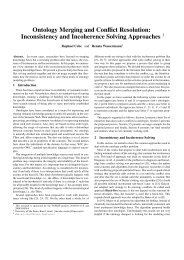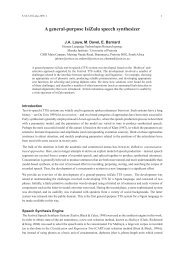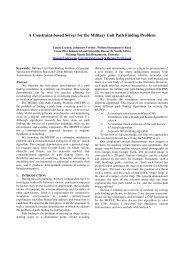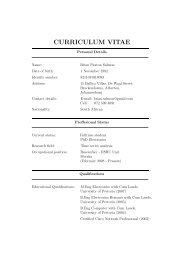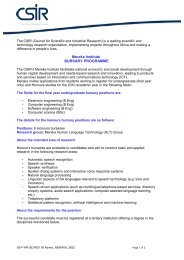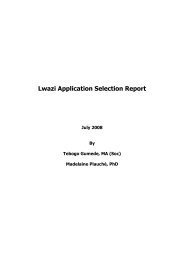Foresight Vehicle Technology Roadmap - Institute for Manufacturing
Foresight Vehicle Technology Roadmap - Institute for Manufacturing
Foresight Vehicle Technology Roadmap - Institute for Manufacturing
- No tags were found...
Create successful ePaper yourself
Turn your PDF publications into a flip-book with our unique Google optimized e-Paper software.
Economic goals<strong>Manufacturing</strong>DevelopmentCostFreightReduce costs of vehicle manufacture and increase speed of production,responsiveness, agility and quality of manufacturing systems (to increase valueadded).Reduce costs and time associated with vehicle development and improve designprocesses (including life cycle considerations).Reduce total cost of vehicle ownership and use, including congestion,maintenance and disposal (public and private transport).Ensure efficient delivery of freight across the UK.Environmental goalsEnergyGlobal warmingHealthWasteConserve non-renewable sources of energy, develop alternative energy sourcesand systems, improve efficiency and waste energy re-use, reduce unnecessarytravel and improve distribution systems.Reduce CO 2 and other greenhouse gas emissions associated with road transport.Monitor and reduce emissions hazardous to health (such as particulates, NOx,benzene, carbon monoxide, sulphur dioxide and ozone, together with noise),during vehicle manufacture, use and disposal / recycling.Reduce the amount of material used in manufacture and use of vehicles, increasematerial recycling and re-use, extend vehicle durability and life, miniaturise,increase functionality (services, software & electronics) and waste recovery.<strong>Foresight</strong> <strong>Vehicle</strong> is currently organised primarily around five technology areas. Each of these hassignificant potential to deliver high impact technology solutions to meet the above social, economicand environmental goals:Engine and powertrain technology (E&PT)Thermal andmechanicalefficiencyPer<strong>for</strong>mance anddrivabilityEmissionsReliability anddurabilitySpeed to marketand costThe efficiency with which the engine and powertrain can convert the energystored in fuel to useful mechanical power is crucial <strong>for</strong> reducing fuelconsumption, the cost of vehicle operation and emissions (in particular CO 2 ).<strong>Vehicle</strong> and engine manufacturers must meet consumer demand <strong>for</strong> improvedvehicle per<strong>for</strong>mance and drivability characteristics, while simultaneouslyreducing fuel consumption and emissions.While CO 2 is a primary by-product of the combustion process (<strong>for</strong> hydrocarbonfuels), other health-damaging emissions, such as particulates, noxious gases andnoise can be reduced substantially.Significant advances in engine and powertrain reliability and durability havebeen achieved in the past two decades, and it is anticipated that this trend willcontinue, with the ultimate goal of achieving a ‘self-diagnosing’ and ‘sealed’engine.The engine and powertrain represents a significant and increasing proportion ofvehicle cost, and improvements in vehicle design and manufacturing processeshave a significant role to play in reducing cost and time-to-market, and henceimproving competitiveness of vehicle manufacturers.40




